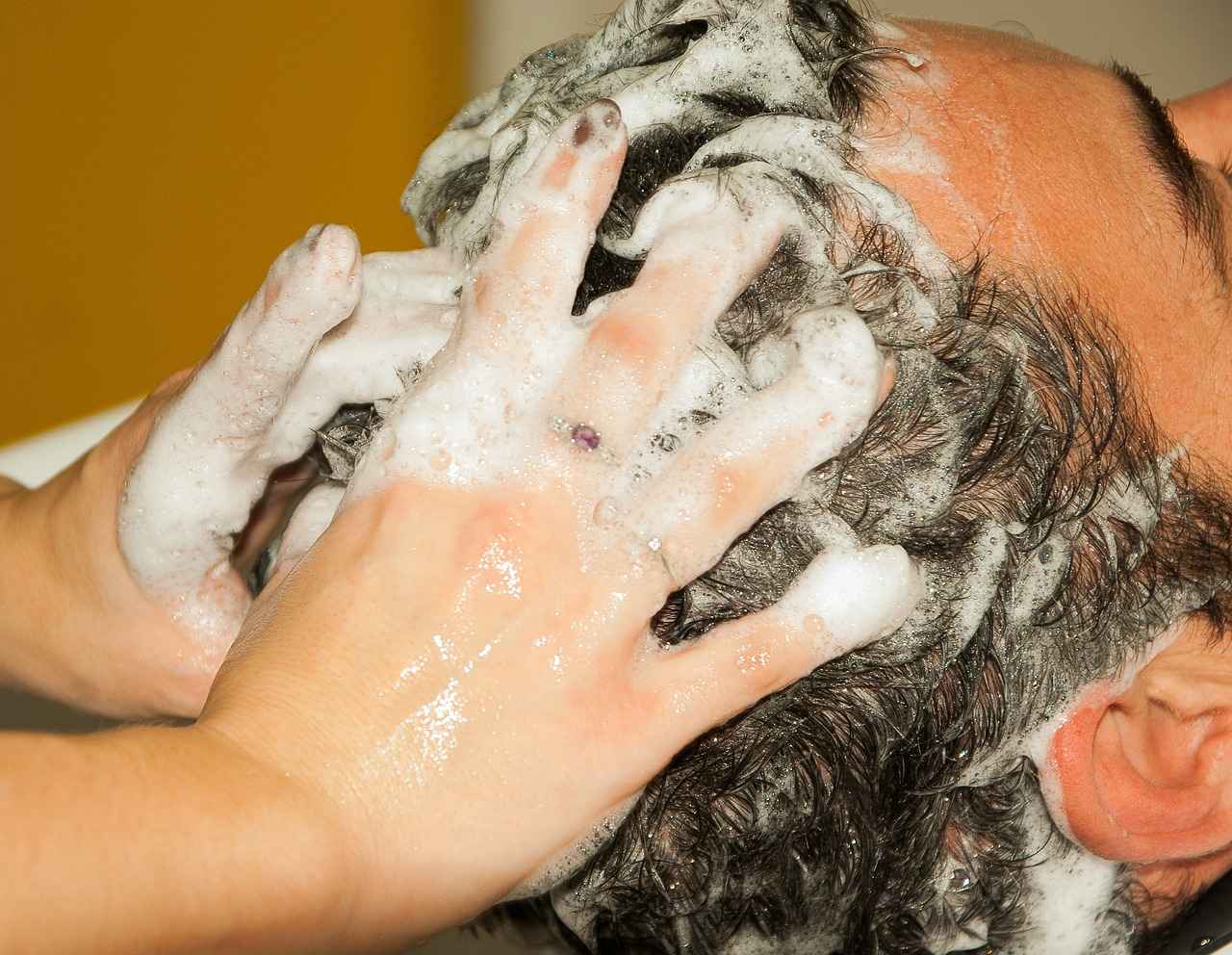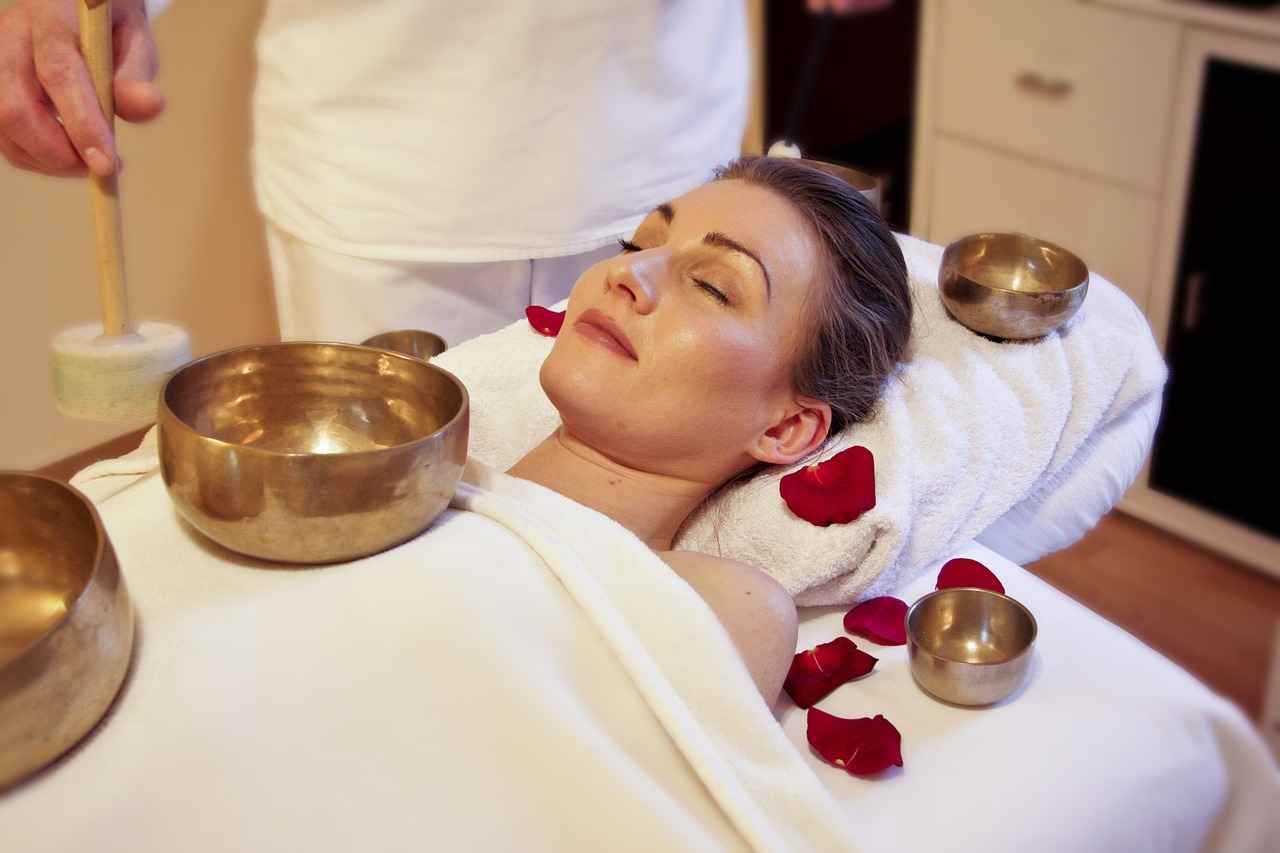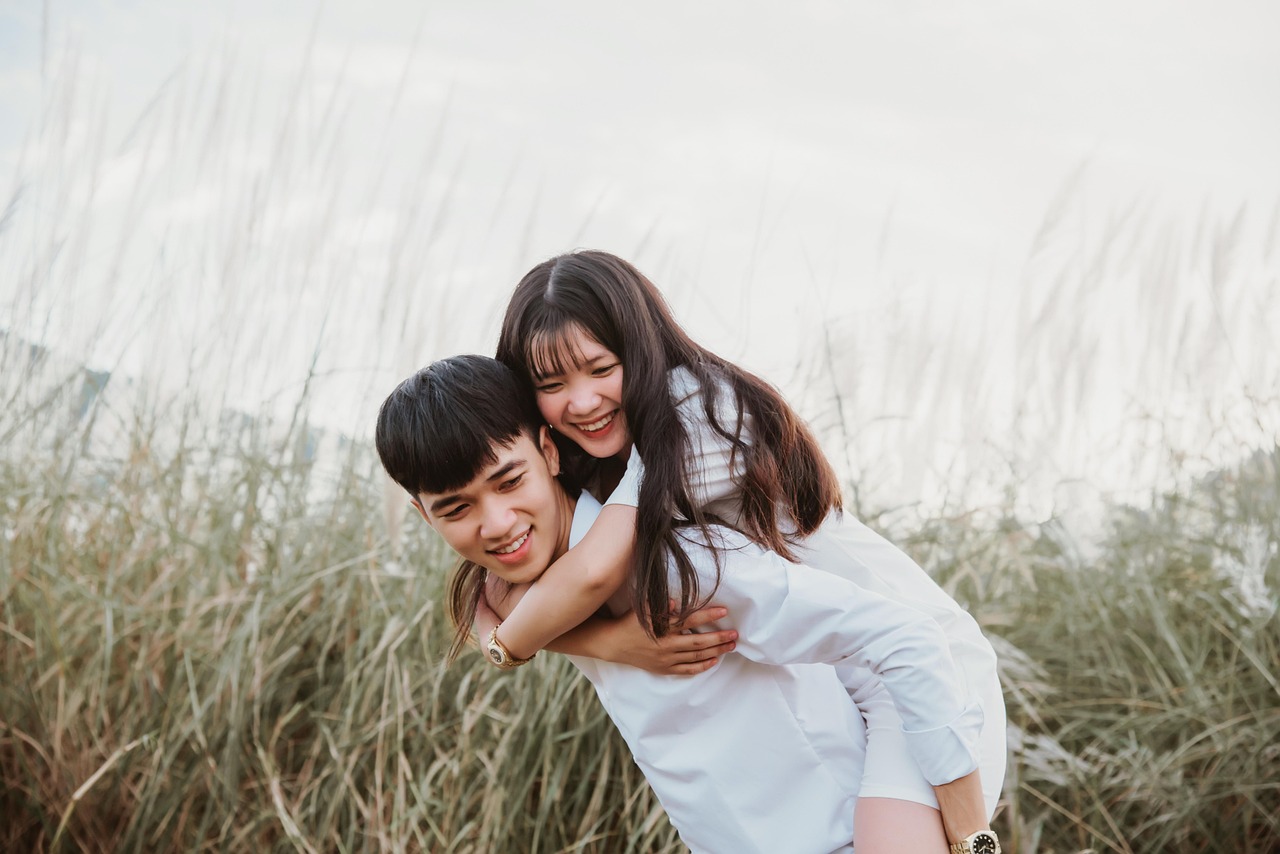This article explores various Asian massage techniques, helping you find the perfect match for your relaxation and wellness needs. Discover the benefits, styles, and tips for selecting the right massage for you.
Understanding the Basics of Asian Massage
Asian massage encompasses a variety of techniques rooted in ancient traditions and philosophies. These practices emphasize the balance of energy within the body, promoting not only physical relaxation but also mental clarity and emotional well-being. Understanding these foundational principles can greatly enhance your massage experience.
Popular Asian Massage Techniques Explained
- Thai Massage: This dynamic technique combines acupressure and yoga-like stretching, enhancing flexibility and relaxation.
- Spa Shiatsu: Utilizing finger pressure along the body’s meridians, Shiatsu promotes balance and harmony.
- Tui Na: A traditional Chinese method focusing on energetic pathways, addressing various health concerns.
Thai Massage: A Dynamic Stretching Experience
Thai massage is characterized by its unique blend of stretching and acupressure. It not only helps improve circulation but also reduces muscle tension, making it an excellent choice for overall wellness.
The Benefits of Thai Massage
- Improved circulation
- Reduced muscle tension
- Enhanced mental clarity
What to Expect During a Thai Massage Session
During a typical Thai massage session, you can expect a serene environment with a focus on relaxation. The session often lasts between 60 to 120 minutes, allowing ample time for deep stretching and pressure application.
Spa Shiatsu: The Art of Finger Pressure
Spa Shiatsu employs targeted finger pressure on specific points, promoting balance within the body. This technique is known for its therapeutic effects, helping alleviate stress and tension.
Tui Na: A Comprehensive Healing Method
Tui Na, a traditional Chinese massage, focuses on stimulating energy flow through various techniques such as kneading and rolling. It is particularly effective in addressing chronic pain and enhancing overall health.
Choosing the Right Asian Massage for You
Selecting the ideal massage technique should align with your personal preferences and health goals. Consider what you hope to achieve—be it relaxation, pain relief, or improved flexibility—when making your choice.
Preparing for Your Asian Massage Experience
Preparation can significantly enhance your experience. Consider wearing comfortable clothing, staying hydrated, and setting intentions for relaxation before your session.
Finding a Qualified Massage Therapist
Choosing a skilled and certified therapist is crucial for a positive experience. Look for practitioners with relevant credentials and positive reviews to ensure a safe and effective treatment.
Post-Massage Care: Maximizing Benefits
After your massage, engage in practices that will help maintain the benefits. This includes staying hydrated, resting, and practicing gentle stretching to prolong your sense of relaxation.

Understanding the Basics of Asian Massage
Asian massage is a rich tapestry of techniques that have evolved over centuries, deeply rooted in ancient traditions and philosophies. These practices are not merely about physical manipulation; they embody a holistic approach to wellness that integrates the body, mind, and spirit. Understanding these fundamental principles is essential for anyone seeking to explore the myriad benefits of Asian massage.
At the heart of Asian massage lies the concept of Qi (or Chi), which refers to the vital life force that flows through the body. Many Asian massage techniques aim to balance and enhance this energy flow, promoting overall health and well-being. This is achieved through various methods, including acupressure, stretching, and rhythmic movements. Each technique is designed to target specific energy pathways or meridians, which are believed to influence physical and emotional health.
Another fundamental principle is the emphasis on mindfulness and awareness. Practitioners encourage clients to focus on their breath and sensations during a session, fostering a deep connection between the body and mind. This mindful approach not only enhances relaxation but also allows individuals to become more attuned to their bodies’ needs, facilitating a greater sense of self-awareness.
The benefits of Asian massage extend far beyond relaxation. Regular sessions can lead to improved circulation, reduced muscle tension, and enhanced flexibility. Additionally, many individuals report experiencing reduced stress and anxiety levels, contributing to an overall sense of well-being. By understanding the underlying philosophies and principles of these techniques, one can better appreciate their applications and the profound impact they can have on health.
In summary, Asian massage is a holistic practice that integrates ancient wisdom with modern wellness needs. By grasping its fundamental principles, individuals can embark on a journey toward enhanced relaxation and improved health, making informed choices about their massage experiences.

Popular Asian Massage Techniques Explained
This section delves into the most popular Asian massage techniques, including Thai, Shiatsu, and Tui Na. Each technique has its own unique characteristics and benefits, which can significantly enhance your overall wellness experience. Understanding these differences will help you make an informed choice that aligns with your personal relaxation and health goals.
- Thai Massage: Originating from Thailand, this technique is often described as a dynamic blend of acupressure and assisted yoga stretches. It aims to promote flexibility, relieve muscle tension, and enhance energy flow throughout the body. Practitioners use their hands, feet, and even elbows to apply pressure to specific points, making each session a holistic experience.
- Shiatsu: This Japanese technique focuses on applying finger pressure to specific points along the body’s meridians. Shiatsu is based on traditional Chinese medicine principles and aims to restore balance and harmony within the body. It is known for its ability to alleviate stress, improve circulation, and promote relaxation.
- Tui Na: A traditional Chinese massage technique, Tui Na focuses on energetic pathways and is often used in conjunction with acupuncture and herbal medicine. It employs a variety of techniques, including kneading, rolling, and pressing, to stimulate energy flow and address various health concerns. Tui Na is particularly effective for treating chronic pain and musculoskeletal issues.
Each of these techniques offers distinct benefits, making it crucial to consider your own needs and preferences when choosing a massage. Whether you’re seeking relaxation, pain relief, or enhanced mobility, understanding these popular Asian massage techniques can guide you toward the perfect match for your wellness journey.
Thai Massage: A Dynamic Stretching Experience
Thai massage is an ancient therapeutic practice that merges the principles of acupressure with yoga-like stretching. This unique combination not only promotes flexibility but also enhances overall relaxation and well-being. Unlike traditional massages that often focus solely on muscle relaxation, Thai massage engages the recipient in a dynamic experience that revitalizes both the body and mind.
During a typical Thai massage session, clients are guided through a series of gentle stretches and pressure points, which stimulate energy flow throughout the body. The therapist uses their hands, elbows, knees, and feet to apply pressure on specific points, known as sen lines, similar to the meridian system in acupuncture. This holistic approach aims to release tension, alleviate pain, and promote a sense of balance.
- Enhanced Flexibility: The yoga-inspired stretches help improve joint mobility and overall flexibility.
- Improved Circulation: The combination of acupressure and stretching promotes better blood flow, which can lead to increased energy levels.
- Stress Relief: The rhythmic movements and pressure techniques help to reduce stress and anxiety, fostering a deep sense of calm.
- Increased Mental Clarity: Many practitioners report enhanced focus and mental clarity following a session, attributed to the release of tension and stress.
When preparing for a Thai massage, it’s essential to wear comfortable clothing that allows for easy movement. Sessions typically last between 60 to 90 minutes, during which clients are encouraged to communicate their comfort levels and any areas of concern. This interactive aspect of Thai massage not only personalizes the experience but also ensures that the treatment is effective and enjoyable.
In summary, Thai massage is more than just a physical treatment; it is a holistic approach to wellness that integrates body, mind, and spirit. By understanding its techniques and benefits, individuals can make informed decisions about incorporating this dynamic practice into their wellness routines.
The Benefits of Thai Massage
Thai massage is a unique and holistic approach to wellness that has gained popularity worldwide. It is not merely a physical treatment but a comprehensive experience that addresses both the body and mind. This ancient practice offers a variety of benefits that can significantly enhance one’s overall health and well-being.
One of the primary advantages of Thai massage is improved circulation. The combination of stretching and acupressure techniques stimulates blood flow throughout the body, promoting oxygen and nutrient delivery to vital organs. This enhanced circulation can lead to increased energy levels and improved organ function, making you feel more vibrant and alive.
Additionally, Thai massage is renowned for its ability to reduce muscle tension. The gentle yet firm stretches help to release tightness in muscles and joints, alleviating discomfort and promoting greater flexibility. This is particularly beneficial for individuals who lead a sedentary lifestyle or engage in repetitive motions that strain specific muscle groups.
Moreover, the practice of Thai massage contributes to enhanced mental clarity. The meditative aspect of the massage encourages relaxation and mindfulness, allowing individuals to disconnect from daily stressors. This mental release can lead to improved focus, creativity, and emotional balance, fostering a sense of inner peace.
Furthermore, the holistic nature of Thai massage means that these physical and mental benefits are interconnected. By addressing both the body and mind, individuals often experience a profound sense of wellness that transcends the massage session itself. Regular practice can lead to long-term improvements in both physical health and emotional resilience.
In summary, Thai massage offers a multitude of benefits, including improved circulation, reduced muscle tension, and enhanced mental clarity. These advantages work together to promote a holistic sense of wellness, making Thai massage an invaluable addition to any self-care routine.
What to Expect During a Thai Massage Session
Understanding what occurs during a Thai massage session can significantly reduce any nervousness you may feel. Typically, a Thai massage session takes place in a serene and calming environment, often featuring soft lighting, soothing music, and a comfortable mat on the floor. This setting is designed to promote relaxation and enhance your overall experience.
During the session, the therapist will guide you through a series of gentle stretches and apply pressure to specific points on your body, similar to acupressure. The techniques used in Thai massage are deeply rooted in traditional practices, focusing on the body’s energy lines, known as sena. These techniques not only aim to relieve muscle tension but also enhance flexibility and improve circulation.
- Duration: A typical session lasts between 60 to 90 minutes, allowing ample time for the therapist to address your individual needs.
- Clothing: Unlike many other massage styles, Thai massage is performed with the recipient fully clothed. It is advisable to wear loose, comfortable clothing that allows for movement.
- Communication: Prior to the session, you will have an opportunity to discuss any specific concerns or areas of discomfort with your therapist, ensuring a personalized experience.
Throughout the session, you may experience a variety of sensations, from deep relaxation to invigorating stretches. It’s essential to communicate with your therapist if you feel any discomfort, as they can adjust their techniques accordingly. By the end of the session, many clients report feeling refreshed and energized, with a greater sense of well-being.
In summary, knowing what to expect can help you approach your Thai massage session with confidence, ready to embrace the numerous benefits it offers.
Shiatsu: The Art of Finger Pressure
Shiatsu is a traditional Japanese massage technique that focuses on applying finger pressure to specific points along the body’s meridians, which are pathways that facilitate the flow of energy or “Qi.” This ancient practice is rooted in the principles of acupuncture and is designed to promote physical and emotional well-being.
The therapeutic effects of Shiatsu are profound. By targeting specific pressure points, Shiatsu helps to release muscle tension, alleviate pain, and enhance overall circulation. The gentle yet firm pressure applied during a session encourages the body to restore its natural balance, leading to a state of relaxation and harmony. Many practitioners and clients report feeling a deep sense of tranquility and rejuvenation following a Shiatsu session.
One of the key benefits of Shiatsu is its ability to address various health concerns. Whether you are dealing with chronic pain, stress, or fatigue, Shiatsu can be tailored to meet your individual needs. The technique not only focuses on physical ailments but also considers emotional and psychological aspects, making it a holistic approach to wellness.
During a Shiatsu session, clients typically lie on a comfortable mat while the therapist uses their fingers, palms, and sometimes elbows to apply pressure. This hands-on approach allows for a deep connection between the therapist and the client, fostering a sense of trust and relaxation. Sessions usually last between 60 to 90 minutes, depending on the client’s needs and preferences.
Overall, Shiatsu is more than just a massage; it is a journey towards achieving balance and harmony within the body. By integrating this practice into your wellness routine, you can experience not only physical relief but also a greater sense of emotional stability and mental clarity.

Tui Na: A Comprehensive Healing Method
Tui Na is an ancient Chinese therapeutic massage technique that emphasizes the flow of energy, or Qi, through the body’s meridians. This practice is not merely a form of relaxation; it serves as a comprehensive healing method that addresses a variety of health concerns. By applying specific techniques, Tui Na aims to restore balance and promote overall wellness.
The origins of Tui Na can be traced back thousands of years, deeply rooted in Traditional Chinese Medicine (TCM). It is based on the principles of Yin and Yang and the concept of Qi—the vital life force that circulates through the body. Practitioners believe that when Qi is blocked or imbalanced, it can lead to physical and emotional ailments. Tui Na seeks to correct these imbalances through a series of manual manipulations.
One of the primary applications of Tui Na is in the treatment of musculoskeletal issues. Techniques such as kneading, rolling, and pressing are employed to alleviate tension, reduce pain, and improve mobility. It is particularly effective for conditions such as chronic back pain, arthritis, and sports injuries. Additionally, Tui Na can enhance recovery from surgery by promoting blood circulation and reducing inflammation.
Beyond physical ailments, Tui Na is also beneficial for emotional and mental health. The deep relaxation experienced during a session can help reduce stress, anxiety, and even symptoms of depression. By harmonizing the body’s energy, Tui Na fosters a sense of well-being and tranquility.
In summary, Tui Na is a versatile and holistic approach to health and wellness. Its unique focus on energetic pathways makes it an invaluable tool for addressing a wide range of health concerns, from physical pain to emotional distress. Whether you are seeking relief from specific ailments or simply wish to enhance your overall well-being, Tui Na offers a path toward achieving balance and vitality.
Key Techniques in Tui Na
Tui Na is a remarkable traditional Chinese massage technique that emphasizes the flow of Qi (energy) throughout the body. Among its various methods, the techniques of kneading and rolling are particularly notable for their effectiveness in enhancing health and well-being. This section will delve deeper into these techniques, elucidating their specific health benefits and applications.
- Kneading: This technique involves applying pressure and motion to the muscles and soft tissues of the body. By using the palms, fingers, and thumbs, therapists can manipulate the muscles to relieve tension and promote relaxation. The benefits of kneading include:
- Improved Circulation: Kneading stimulates blood flow, which can help in the delivery of oxygen and nutrients to the tissues.
- Muscle Relaxation: This technique helps to alleviate tightness in the muscles, making it particularly beneficial for those with chronic pain or tension.
- Stress Reduction: The rhythmic nature of kneading can induce a state of calm, reducing stress and anxiety levels.
- Rolling: This method involves a gentle, rhythmic motion that rolls over the muscles. It is often used to enhance flexibility and mobility. The benefits of rolling include:
- Enhanced Flexibility: By loosening tight muscles and joints, rolling can improve overall flexibility, making it easier to perform daily activities.
- Release of Tension: Similar to kneading, rolling helps in breaking down adhesions and knots in the muscles, promoting a sense of lightness and ease.
- Energetic Balance: Rolling assists in balancing the body’s energy flow, which can lead to an improved sense of well-being.
In summary, the techniques of kneading and rolling in Tui Na are not just about physical manipulation; they play a vital role in promoting holistic health. By understanding and experiencing these methods, individuals can harness their benefits for both physical and emotional wellness.
Choosing the Right Asian Massage for You
Choosing the right Asian massage technique is a personal journey that requires careful consideration of your individual needs and wellness objectives. With a variety of styles available, it is essential to assess your preferences and health goals to find the most suitable option for you.
Assessing Your Needs: Start by reflecting on what you hope to achieve from your massage experience. Are you looking for stress relief, pain management, or perhaps improved flexibility? Understanding your primary goals will help narrow down your choices. For instance, if relaxation is your primary goal, you might find that Thai massage or Shiatsu techniques are particularly effective.
Exploring Different Techniques: Familiarize yourself with the various Asian massage techniques available. Each method offers unique benefits:
- Thai Massage: Combines acupressure with assisted stretching, ideal for enhancing flexibility and relieving tension.
- Shiatsu: Focuses on applying pressure to specific points, promoting balance and energy flow throughout the body.
- Tui Na: A Chinese technique that employs rhythmic kneading and rolling motions, effective for pain relief and healing.
Consider Personal Preferences: Beyond health goals, think about your comfort with different massage styles. Some individuals may prefer deep tissue work, while others might enjoy lighter, more gentle techniques. Additionally, consider whether you are comfortable with the idea of clothing during the session, as some techniques, like Thai massage, often involve more active movements that may require flexible attire.
Consult with a Professional: Once you have a clearer understanding of your needs and preferences, consulting with a qualified massage therapist can provide valuable insights. They can offer recommendations tailored to your specific situation, ensuring a more personalized experience.
Ultimately, the journey to finding the right Asian massage technique is about aligning your personal preferences with your health goals. By taking the time to assess your needs and explore various options, you can discover a massage style that not only enhances your well-being but also brings you a sense of relaxation and rejuvenation.

Preparing for Your Asian Massage Experience
Preparation can significantly enhance your massage experience, ensuring that you receive the maximum benefits from your session. By taking a few simple steps beforehand, you can create a more conducive environment for relaxation and healing. Below are some practical tips to help you prepare effectively.
- Choose Comfortable Attire: Wear loose, breathable clothing that allows for easy movement. Avoid tight-fitting garments as they can restrict your comfort during the massage. Natural fabrics like cotton are ideal, as they help your skin breathe.
- Stay Hydrated: Proper hydration is crucial before your massage. Drink plenty of water in the hours leading up to your appointment. This helps to flush out toxins and enhances circulation, allowing your body to respond better to the massage techniques.
- Set Your Intentions: Before your session, take a moment to reflect on what you hope to achieve. Whether it’s relaxation, pain relief, or stress reduction, setting clear intentions can help guide your experience and enhance the effectiveness of the massage.
- Arrive Early: Arriving a few minutes early allows you to acclimate to the environment. Use this time to unwind and mentally prepare yourself. It can also give you a chance to discuss any specific areas of concern with your therapist.
- Avoid Heavy Meals: Try not to eat a large meal right before your massage. A light snack is fine, but a heavy meal can lead to discomfort while lying on the massage table.
- Communicate with Your Therapist: Open communication is key. Don’t hesitate to discuss any preferences or areas of tension with your therapist. This helps tailor the session to your needs and ensures a more satisfying experience.
By following these tips, you can create a more enjoyable and effective massage experience. Remember that preparation is not just about the physical aspects; it’s also about cultivating a mindset of relaxation and openness to the healing process.
Finding a Qualified Massage Therapist
is essential for ensuring a positive and effective experience during your Asian massage session. With the increasing popularity of various Asian massage techniques, it is crucial to select a therapist who possesses the right skills and credentials. This section will guide you through the process of identifying qualified practitioners and the key credentials to look for in Asian massage therapists.
When searching for a therapist, start by considering their certifications. Look for individuals who are certified by recognized organizations, which often require rigorous training and adherence to ethical practices. For example, certifications in Thai massage, Shiatsu, or Tui Na can indicate a therapist’s proficiency in specific techniques.
Another important factor is the therapist’s experience. Inquire about how long they have been practicing and the types of massages they specialize in. Experienced therapists are more likely to understand the nuances of different techniques and how to tailor their approach to meet your individual needs.
Additionally, personal recommendations can be invaluable. Ask friends, family, or colleagues if they can suggest a reputable therapist. Online reviews and testimonials can also provide insights into the therapist’s skills and the quality of their services.
Furthermore, consider scheduling a consultation before your first session. This meeting allows you to discuss your health concerns and preferences, as well as to gauge the therapist’s communication style and professionalism. A good therapist will listen to your needs and explain their approach clearly.
Lastly, ensure that the therapist maintains a clean and welcoming environment, as hygiene is paramount in any massage practice. A well-kept space reflects the therapist’s commitment to providing a safe and comfortable experience.
By taking these factors into account, you can confidently choose a qualified Asian massage therapist who will enhance your relaxation and wellness journey.
Post-Massage Care: Maximizing Benefits
After indulging in a rejuvenating massage, it is essential to engage in certain practices that can significantly enhance the benefits of your experience. This section provides valuable post-massage care tips that can help you maintain relaxation and promote overall well-being.
- Hydration is Key: One of the most important steps post-massage is to hydrate. Drinking plenty of water helps flush out toxins released during the massage and keeps your muscles hydrated. Aim for at least 8 ounces of water immediately after your session, and continue to hydrate throughout the day.
- Prioritize Rest: Allowing your body to rest after a massage can amplify its benefits. Your muscles have been worked on extensively, and giving yourself time to relax can help facilitate recovery. Consider taking a nap or engaging in quiet activities to enhance your relaxation.
- Gentle Stretching: Incorporating gentle stretching into your post-massage routine can help maintain the flexibility gained during the session. Focus on slow, deep stretches that target areas worked on during your massage. This practice can improve circulation and prevent stiffness.
- Avoid Strenuous Activities: After your massage, it is advisable to avoid high-intensity workouts or activities that may strain your muscles. Allow your body the time it needs to fully absorb the benefits of the massage.
- Mindfulness and Breathing: Engaging in mindfulness practices, such as deep breathing or meditation, can further enhance your relaxation. Spend a few minutes focusing on your breath, allowing your mind to settle and your body to unwind.
By following these post-massage care tips, you can maximize the benefits of your massage experience, promoting a deeper sense of relaxation and overall wellness. Remember, taking care of your body after a massage is just as important as the massage itself.
Frequently Asked Questions
- What is the difference between Thai massage and Shiatsu?
Thai massage is a blend of acupressure and yoga-like stretching, focusing on enhancing flexibility and relaxation. On the other hand, Shiatsu primarily uses finger pressure on specific meridian points to promote balance and harmony within the body. Each technique offers unique benefits, so it’s essential to choose based on your personal wellness goals.
- How do I prepare for my first Asian massage session?
Before your first session, it’s a good idea to wear comfortable clothing that allows for movement, stay hydrated, and communicate any specific areas of tension or discomfort to your therapist. Setting an intention for relaxation can also enhance your experience.
- Are there any health conditions that prevent me from getting an Asian massage?
While many people can benefit from Asian massage, certain conditions like severe osteoporosis, recent surgeries, or skin infections may require caution. Always consult with your healthcare provider and inform your therapist about any health concerns before your session.
- How often should I get an Asian massage?
The frequency of massages depends on your individual needs and wellness goals. Some people find benefit in weekly sessions, while others may prefer monthly visits. Listen to your body and adjust as necessary to maintain optimal health and relaxation.












